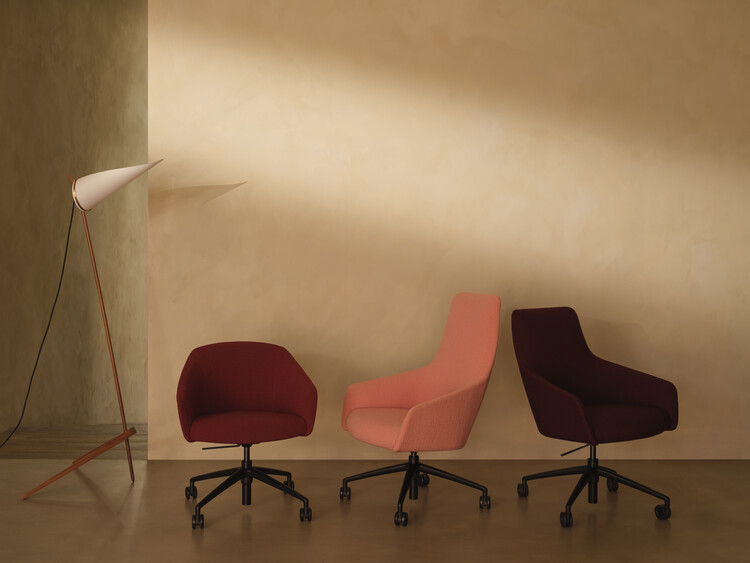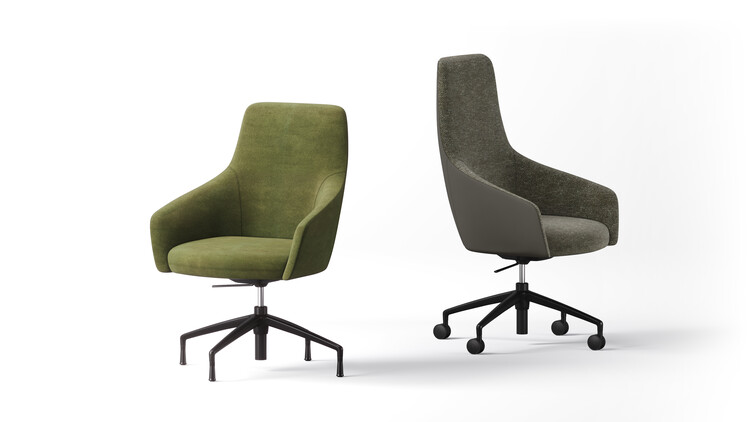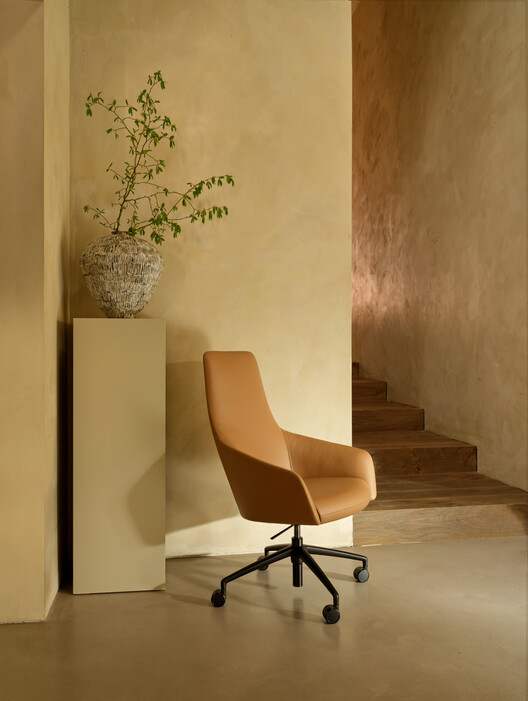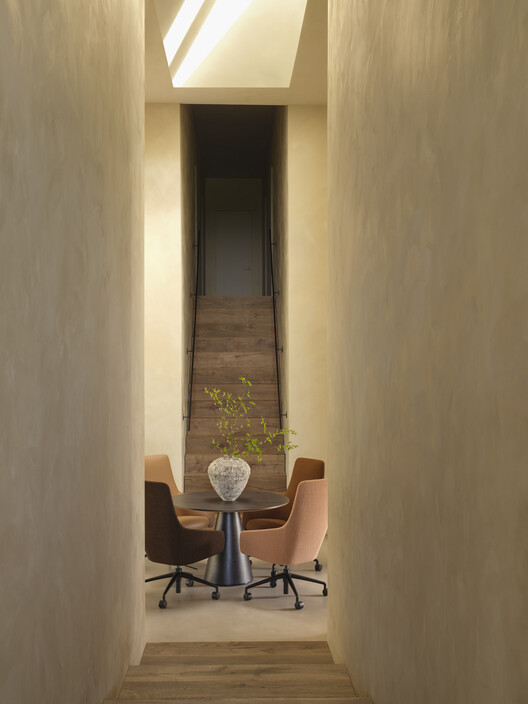
Think of a chair designed for a meeting room. Its height, upright posture, and material language are deliberate choices—they signal presence, focus, and a degree of formality in a space where important decisions are made. Replace that chair with a low, plush sofa and the entire spatial dynamic shifts: focus softens, posture relaxes, and hierarchies dissolve. Every chair, stool, or sofa is more than just a way to fill space. It is a device designed for a specific type of interaction, a defined posture, a particular rhythm of use. When these purposes are ignored, even the most carefully curated interiors can feel fragmented or incoherent. Furniture plays an invisible yet fundamental role in shaping how people behave, how they feel, and what kind of work happens.
This doesn't mean furniture should be confined to a single use. Versatility is valuable when it's intentional, not assumed. A chair that works in both meeting rooms and shared spaces can only do so because its ergonomics, proportions, and materiality have been carefully calibrated for multiple contexts. And while the rules of appropriateness aren't always explicit, we tend to recognize them when we see them. That's the power of good design: it doesn't impose itself; it simply feels right. The value of a piece doesn't lie in being "better," but in being aligned with the moment and behavior it's meant to support.

The Uma chair, from the Uma Collection, designed by Aaron Clarkson for Boss Design, represents an evolution of the executive chair and reflects this new paradigm in corporate furniture. Its design seeks coherence between form, performance, and environmental impact, as a response to the growing demand from companies to align visual identity with environmental responsibility. The core idea is clear: a chair designed for leadership spaces must balance symbolic presence with physical performance, without compromising on ergonomics or sustainability. While many high-back models communicate authority through bulk or rigid geometry, Uma follows a more restrained, fluid, and intentional approach, in line with contemporary codes of presence in the workplace.
At first glance, its silhouette is discreet. But behind this calm profile lies meticulous engineering. The monolithic structure that integrates the backrest and arms into a single component eliminates unnecessary seams and joints, reducing the number of parts and optimizing both assembly and disassembly at the end of its lifecycle. A particularly clever design detail lies in the seat base: a 15 mm recess in the plywood allows for additional foam without changing the chair's outer profile, providing comfort without sacrificing a sense of visual lightness. As Clarkson explains: "When you sit into Uma, the back has a beautiful shape that flows with the spine, and where your lower back touches the chair we've inset a panel of softer foam to augment the comfort while providing ergonomic support."


Environmental impact was also carefully considered. Polyurethane foam is one of the largest contributors to the carbon footprint of upholstered seating, as it's derived from fossil fuels and requires energy-intensive curing processes. Uma replaces this material with Bio-PUR®, a plant-based foam that reduces carbon emissions by 75%. In addition, every component was designed with disassembly and reuse in mind. The steel substructure, moulded foam, aluminum base, and plywood core can be separated using simple tools, facilitating repairs and recycling. Boss Design's established reupholstery service further extends product life, reducing the need for full replacement. Uma qualifies for the company's new Carbon Efficiency Label, developed in accordance with ISO 14067. This certification goes beyond calculating kgCO₂e, incorporating expected lifespan, volumetric density, and reuse potential—treating furniture as part of a carbon asset management strategy, rather than as disposable goods.

Despite its environmental credentials, the design doesn't rely on overt "eco" aesthetics. Its commitment to sustainability is embedded in engineering decisions and material clarity, rather than visual cues. More importantly, Uma doesn't try to be everything at once. Its design has a clear purpose: it was conceived for executive and meeting environments, where comfort and presence must coexist, and where durability—in form, material, and use—is part of the value proposition. In a time when offices and their furnishings are being increasingly held to standards of environmental coherence and actual performance, Uma distinguishes itself not by declaring intentions, but by delivering them quietly and precisely.















